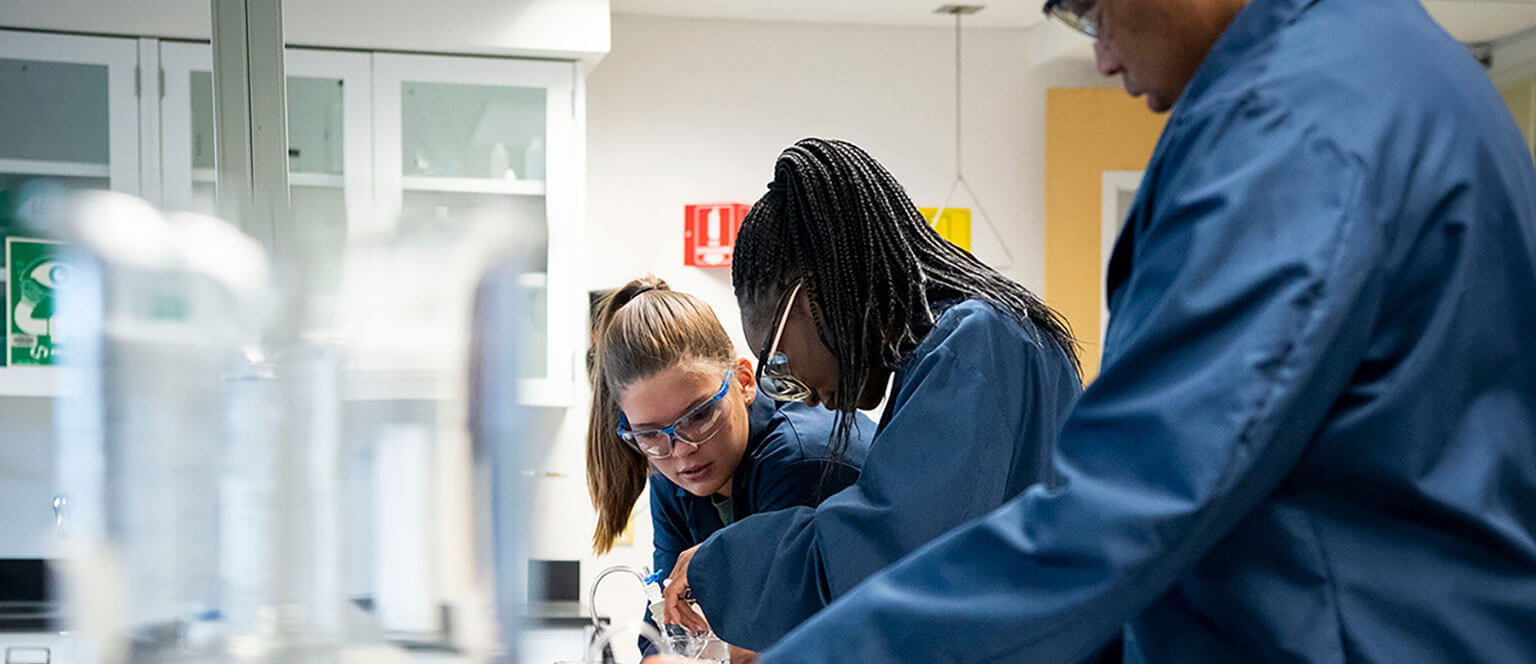Science Department

The Science Department uses chemistry as the primary vehicle in developing scientific literacy, problem solving, and critical thinking skills. Physics is also offered to approximately one-fourth of the class, and enrolls high-performing students who have demonstrated exceptional performance across the curriculum relative to their class, especially in algebra.
Like mathematics, students are given an initial science assessment at the beginning of the academic year. Consisting of fifty multiple choice questions, the assessment tests students’ incoming knowledge on a range of learning objectives that would be covered in a typical college-level General Chemistry course, as well as their knowledge of basic scientific reasoning and data analysis. The assessment is re-administered at the end of the academic year in order to provide a relativistic growth metric.
Approximately 70% of a student’s grade in the science department is based on formal assessments that measure their individual performance abilities. These assessments consist of graded reviews given approximately every three weeks, as well as a series of short quizzes given at the beginning of each chemistry lesson.
Graded reviews (GRs) cover one unit of study, and are deliberately timed to test only concepts that closely relate to one “big idea” in the curriculum, for example atomic structure, chemical nomenclature, or harmonic motion. GRs consist of between 15 and 20 multiple choice questions that comprise half of the score, while the other half consists of between four and six workout-type problems. Students are not permitted to re-take GRs or make any corrections once submitted. The short, daily quizzes consists of three to four questions that require students to demonstrate a skill learned in the previous lesson, as well as their base knowledge related to the next lesson’s primary learning objectives. This requires them to prepare in advance for each lesson by reading the assigned material and engaging with new vocabulary terms and mathematical formulas.
The remaining 30% of a student’s grade is based on formative assessments that allow regular feedback, collaboration, and revision. These assignments include:
- laboratory reports
- in-class worksheets
- online problem sets
Laboratory reports and in-class worksheets allow only one submission, but students are permitted to collaborate with classmates, provided they thoroughly document all help received. Online problem sets allow unlimited submissions and collaboration, and students are encouraged to complete them multiple times in order to achieve the maximum score. This encourages repeated practice in order to facilitate concept mastery.